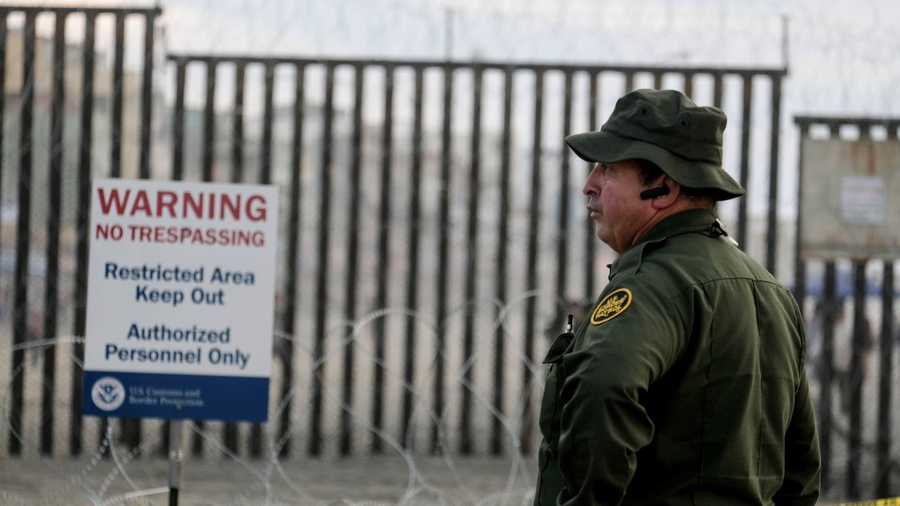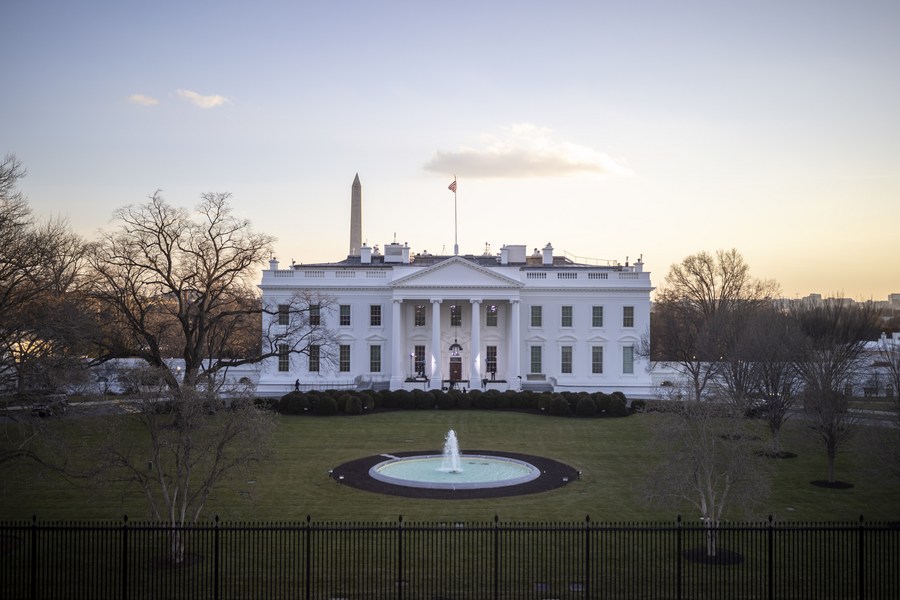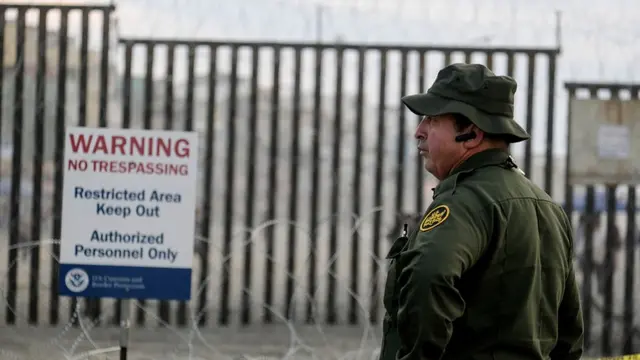
The border fence that divides the U.S. and Mexico in San Diego, California, the U.S., November 17, 2018. /Xinhua
Editor's note: Hannan Hussain is a foreign affairs commentator and author. He is a Fulbright recipient at the University of Maryland in the U.S. and a former assistant researcher at the Islamabad Policy Research Institute. The article reflects the author's opinions and not necessarily the views of CGTN.
In what has been characterized as one of America's gravest migrant surgesfrom the south in 20 years, thousands crowdedthe U.S.-Mexico border to test U.S. President Joe Biden's gains on his anti-immigration overhaul. Among them lie some 15,000 unaccompanied children, now under government custody, raising questions about the border agencies' legal obligation to fast-track accommodation within 72 hours.
Voices across party lines are growing criticalof the administration's lax recognition of known capacity shortcomings, prompting the Homeland Security chief to contradict Biden on his own pro-immigration push: migrants are entitled to legal protection, but the U.S. border is set for closure.
Taken together, a quick-fix approach to America's border surge would neither serve the interests of the current migrant influx, nor put Biden's immigration agenda over the line. The key to mitigating further escalation lies in an early identification of incoming challenges and their associated risks.
Rapid border processing is likely to become a mirage in the coming weeks, if the Biden administration continues to engage with a competing set of organizations to manage border support operations. Scores of little-known nonprofit organizations are the latest to arriveat the U.S. border facilitation sites, but their linkages with vulnerable families are directly undermined by Trump-era detention centers, many of which operate in similar capacitiesfrom the sidelines. Only last week, about 1,200 migrants were held upin two such family detention centers.
As a result, the type of migration management operations has a direct bearing on the quality of treatment that individuals and families are likely to receive. Biden can address this alarming friction by adding a new target to his January order on detention facilities: ending immigration jails run bythe U.S. Immigration and Customs Enforcement (ICE).
The president's second long-term challenge is an undesirable recourse to Trump's restrictive Title 42 policy. The latter is a border provision that allows U.S. authorities to exercise wholesale expulsions, extend asylum terminations and keep the border shut based on "nonessential" travel grounds.
As pressure mounts on Washington to produce political justifications for its sudden border closures – and accompanying migration talks in Mexico and Guatemala – Biden officials are veering towards the controversial Title 42 policyby arguing its use as necessary to limit the spread of COVID-19.

The White House in Washington, D.C., the U.S., January 20, 2021. /Xinhua
But leading public health officials and CDC experts are already on record admitting that Title 42 has little to do with the virus spread. They have also made clearthat the order will ultimately serve hardline politics, not public health considerations.
This brings a fundamental question to mind: is this the narrative that Biden officials really wish to communicate?
Certainly not. The same officials are also leading a massive effort to boostrefugee admissions into the U.S. and are chalking out options to streamline deportation relief. However, expansive legislation designed to restore a nationally equitable immigration system is itself a strong justification for constituting "more humaneimmigrationpolicies"in the midst of the pandemic.
Therefore, any unwarranted embrace of policies such as Title 42 would challenge the credibility of Biden's fair migration overhaul and underline a schism between health agencies and the White House that could leave two million incoming migrantsto fend for themselves this year.
Then come the perils of sidestepping Biden's much-admired free press, as major media outlets are denied complete accessto border facilities. Lawmakers, oversight lawyers and reporters have collectively sharpenedtheir criticism of an unofficial order that restricts what the U.S. Border Patrol can share with the media in terms of information, coordination and evidence on border facilities.
The growing impression in Capitol Hill is that the Biden administration wants to sustain a victory narrativeagainst a possible border crisis. If the impression succeeds, it will arrive at a cost Biden simply cannot afford: risking his image as a catalyst for independent oversight and inter-agency transparency on immigration.
Note that in order to gain local supportin Mexico and Guatemala for a migration pause, Biden envoysmust directly establish timelines that confirm child migrant facilities in the U.S. would reach adequacy. The closest assurance from the White House was a rough estimateof new facilities cropping up, but their presence is not scaled to meet monthly border surges.
There is a fair chance that Biden's border coordinator Roberta Jacobson may deliver a similar forecast to Mexican and Guatemalan officials this week. But she may struggle to convince Mexican officials that restricting travel on the southern border is principally in their policy interests. Especially when the trigger behind the current surge is a shift in anti-immigration sentiment within the U.S., not Mexico – placing the onus of ownership on Washington.
(If you want to contribute and have specific expertise, please contact us at [email protected].)
 简体中文
简体中文

